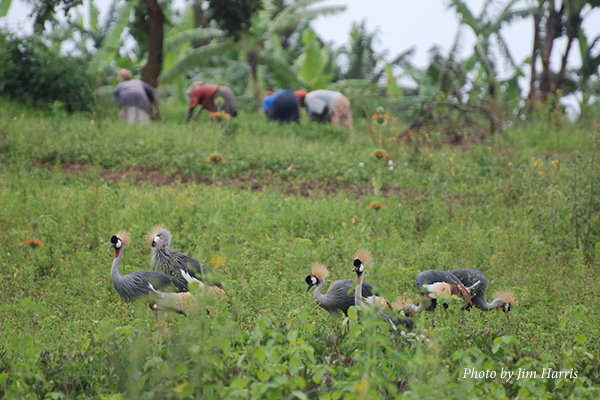
I watched with pleasure as Phionah and Gilbert, the two new project assistants for the Cranes and Wetlands project here in Uganda, signed the contracts for their new jobs on Friday, July 5, 2019. I reflected on the love for cranes that had been ignited by Professor Derek Pomeroy, now retired, of Makerere University, when, in 1999 he inspired me to research cranes. Before, as I grew up, we lived with cranes and saw them dance and liked them. Derek built on this love by advising me to conduct research on them, which eventually led to the birth of the crane project in Uganda.
As Phionah and Gilbert signed their contracts, I sighed in relief because I now had the staff to complement my efforts in the project that I pioneered and managed single-handedly for over 19 years. I also reflected on the year 2000, when Uganda hosted the 10th Pan Ornithological Congress and among the guests was Dr. Rich Beilfuss, currently the President of the International Crane Foundation. We sat to discuss my Master of Science thesis titled, “Assessing the biology of the Grey Crowned Crane, Balearica regulorum, in Uganda,” for which he was the external examiner. Together, we looked at the need for visiting my research areas, among which was Kabale, which had posted a significant crane population. Here, we met with community members who interfaced with Grey Crowned Cranes daily and we, too, looked at how the crane breeding habitat had been degraded over time. I promised Dr. Rich that I would do something to enhance the plight of the cranes.
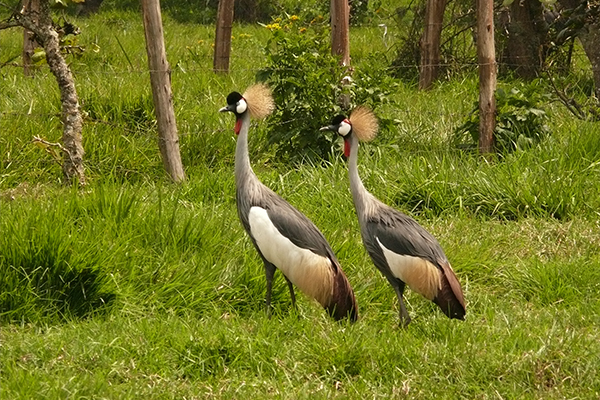
In 2001, I contracted with three, small community groups, Kitojo Farmers and Wetland Conservation Group, in Bushenyi, Kyandazima Wetlands Conservation Group in Masaka and Bubare Farmers in Kabale, to start the journey of conserving cranes and their habitats in Uganda. This was the birth of the Cranes and Wetlands conservation project. Through Dr. Rich, I received the first funding for the project. Because I was working at Makerere University as a teaching assistant, my supporters advised that I utilize the funds under a non-governmental organization, so in my mind, NatureUganda, a local organization, was the appropriate destination.
At that time, we could only afford crane monitoring and awareness activities with the three groups. But nevertheless, we gained prominence and were locally nick-named “Abentuuha” or crane people. I bought a small, personal car, which became the project car, and with it, we could reach far and wide in the project area despite the poor terrain. Sometimes the project suffered funding gaps, but I endured till 2006 when I secured additional funding. With this support, I led on the restoration of the degraded Nyamuriro wetland in Kabale. This was to the amusement of many people because no one thought some form of restoration was possible in Kabale where the land was and is still more than a scarcity.
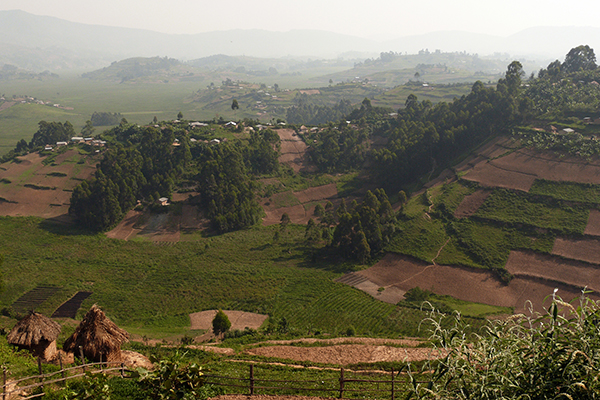
Because of this work, Kerryn Morrison, Vice President International – Africa for the International Crane Foundation, nominated me for a prestigious Whitley Award, which I received in 2010. This was a big turning point for the project. I plowed the money into the project and gained conservation mileage, which further earned me a continuation of funding from new sources.
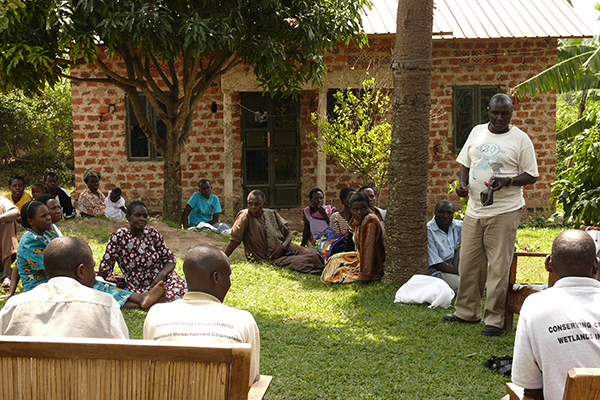
With these funds, I started the Crane Custodianship initiative for the enhancement of crane breeding success. I also reached out to more community groups with livelihood support in return for conservation actions and included schools in the project. As the groups and schools we work with grew in numbers and in tandem with the funding size, there has been a strong need for growth in staff. Phionah and Gilbert have formally joined me in Uganda, joined us in East Africa, joined us in the Endangered Wildlife Trust African Crane Conservation Project and joined us in the Endangered Wildlife Trust/International Crane Foundation Partnership. I have all the trust that, with them and with everyone’s support, we will further, positively change the plight of the Endangered Grey Crowned Cranes, improve their habitats and improve on the community’s wellbeing.
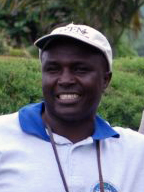 Story submitted by Jimmy Muheebwa, Uganda Projects Coordinator. Click here to learn more about our work in Sub-Saharan Africa.
Story submitted by Jimmy Muheebwa, Uganda Projects Coordinator. Click here to learn more about our work in Sub-Saharan Africa.
